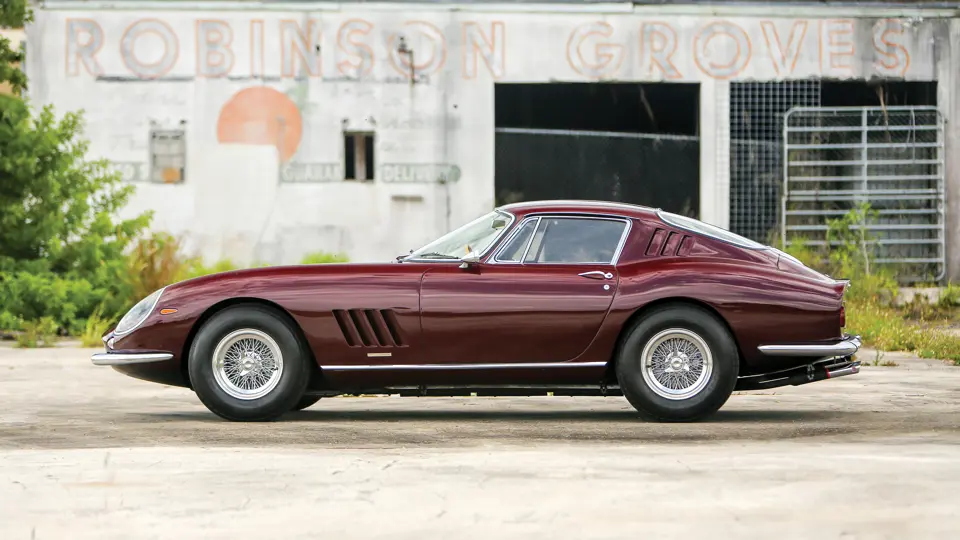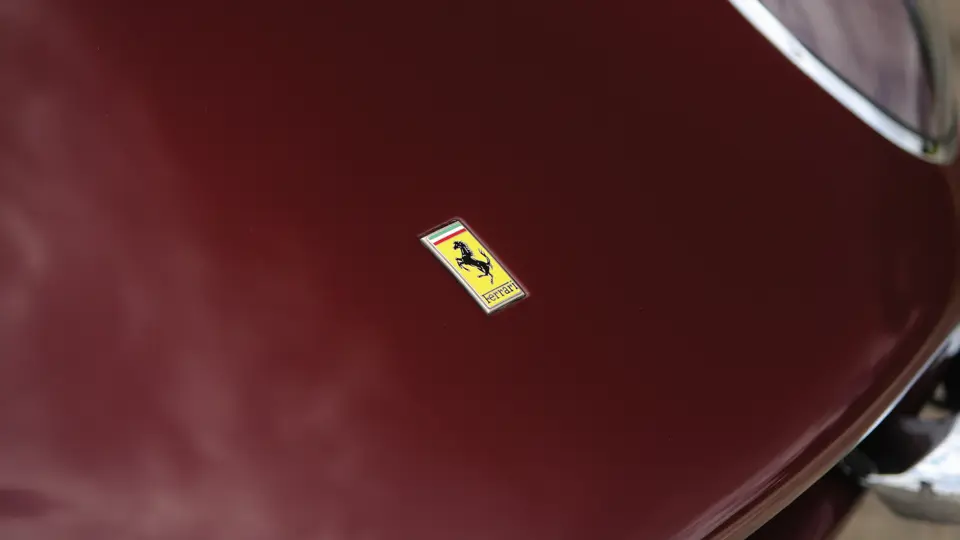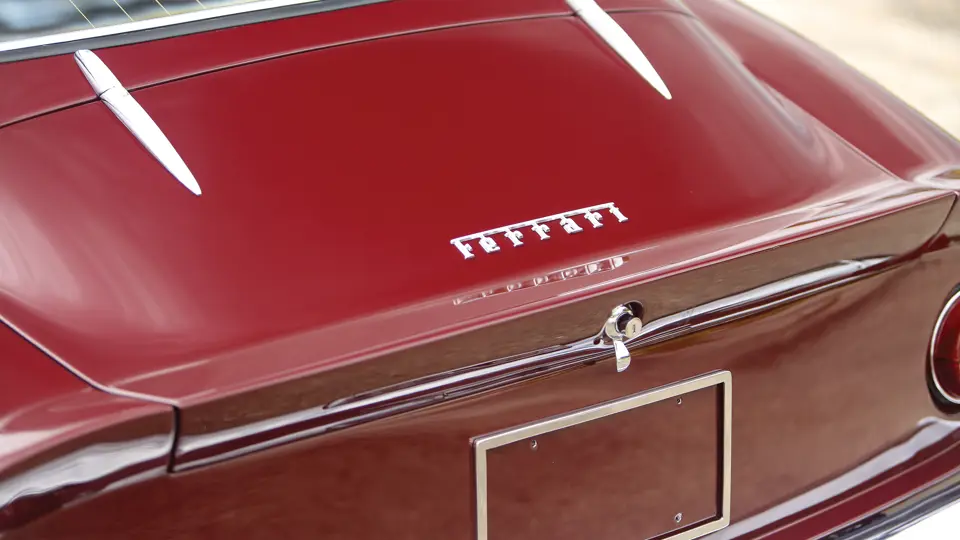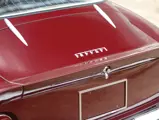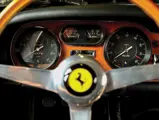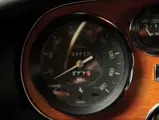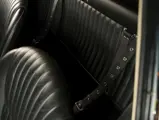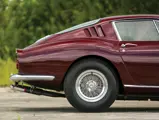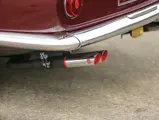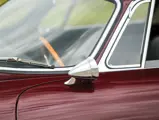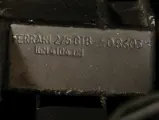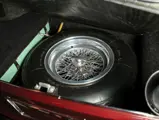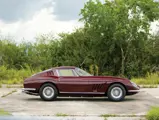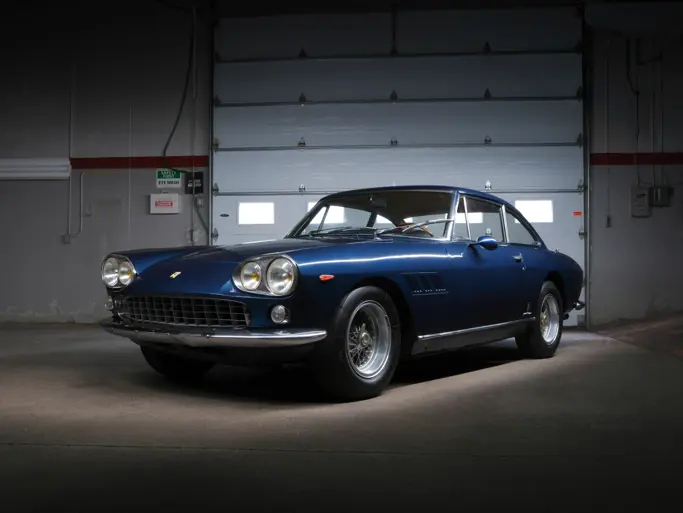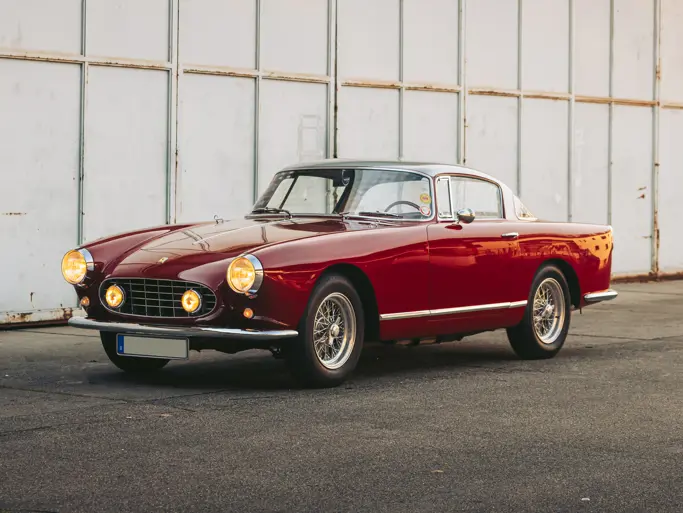
1966 Ferrari 275 GTB by Scaglietti
{{lr.item.text}}
$1,985,000 USD | Sold
{{bidding.lot.reserveStatusFormatted}}
- One of approximately 58 long-nose, torque-tube, triple-carburetor, steel-bodied examples
- Retains its matching-numbers original engine and gearbox
- Finished in its original colors of Rosso Rubino over Nero
- Includes tool roll and set of owner’s manuals
Although it could be argued that the 250 GT series of road-going models solidified Ferrari’s reputation as a builder of sports and grand touring cars, the platform was becoming a bit long in the tooth by 1963. Its much-anticipated replacement, the 275 GTB, debuted alongside the drop-top 275 GTS at the 1964 Paris Motor Show to great acclaim, affirming that Ferrari still had a bright future.
Almost identical in name, these two models were certainly not identical in ethos. The 275 GTS, constructed by Pininfarina, emphasized comfort and luxury, while its closed sibling, the 275 GTB, bore a harder edge and more sporting nature. Both cars boasted a number of interesting features and advances that were sure to excite even the most seasoned of drivers. Technically, the 275 featured the final development of the classic single-overhead cam Colombo short-block design, which was now enlarged to displace 3,286 cc. Optimal weight balance was achieved by mounting the gearbox directly to the rear axle, a rear transaxle design that would become a standard practice in many ensuing Ferrari road cars. The 275 is also notable as the first Ferrari for the street to feature an independent suspension on all four wheels, an innovation that eventually took hold across automobile manufacturing.
A late-production 275 GTB, chassis no. 08603 was fitted with triple Weber carburetors and finished in Rosso Rubino (160-R-12) over a Nero (VM 8500) interior with full leather seats, just as it presents today. It was originally delivered to its first private owner, a Mr. Cochran of Los Angeles, after passing through Luigi Chinetti’s East Coast distributorship.
Over the course of the 275’s production run, a number of rolling changes were implemented to continuously improve the model. The two most important changes were the introduction of the “long-nose” body style and the installation of a torque tube. The nose was lengthened on later cars in an effort to eliminate the undesirable high-speed lift characteristics of the earlier short-nose models. Additionally, a torque tube was added in early 1966 to improve the stability and durability of the drivetrain. These changes were being applied to all 275 GTBs by the time its successor, the 275 GTB/4, was introduced, and these “long-nose, torque-tube” 275 GTBs are often considered to be the most desirable iterations of the model. Chassis 08603 is one such example.
As of 1974, the car had moved to Enid, Oklahoma, where it was noted as being owned by Don Blenderman, according to Ferrari historian Marcel Massini. No stranger to high-horsepower V-12s from Maranello, Blenderman also owned a 250 LM. It then passed through the ownership of Michael McCafferty of San Diego in 1977, who owned the car for several years. In recent correspondence, he notes that he enthusiastically drove the car daily, even selling his Canon camera so he could buy a new set of tires. McCafferty later sold the car to his then mechanic, Gary Bobileff, who repainted it Fly Yellow and in turn sold it to Charles H. Reid of Houston, Texas, around 1980.
Remaining in Texas through at least 1983, the car’s next owner is noted as Ferrari collector Dr. Robert Bodin of Minneapolis, and in 1992 the car was sold to another respected Ferrari collector, Rodolfo Junca de la Vega II. While in Junca de la Vega’s ownership, 08603 was shown at the second annual Vintage Ferrari Concours in Carmel Valley, California, and placed 3rd in Class. It was shown once more by Junca de la Vega at the Ferrari Club of America International Concours d’Elegance in Monterey, California, in August 1994, where it earned an impressive 1st in Class award. Later that year, it left the U.S. for the first time since it arrived at Chinetti’s distributorship almost 30 years earlier.
Afterwards, the car was sold to Japan, where it remained for 20 years before returning to the U.S. in the fall of 2014. Overall, the car presents wonderfully throughout and has clearly been well kept since its restoration. The interior presents very well, with all the correct trim and fittings, including an original steering wheel and proper markings on the windshield and side glass with door and window seals in excellent condition. The car’s chrome trim is also in excellent condition and, along with the Borrani wire wheels mounted with Michelin XWX tires at all four corners, adds to the car’s already-stunning good looks.
More recently, chassis no. 08603 was repainted in its original Rosso Rubino, and the car received a full engine-bay detail and refinishing to bring the car to a greater level of factory correctness. A number of new components were fitted to facilitate this, including a new washer bag, correct airbox and labels for the heater and radiator hoses, as well as factory-correct bolts, nuts, and fasteners where necessary. Invoices for this work are on file. Furthermore, the car is accompanied by a tool roll and a set of owner’s manuals.
Without a doubt one of the most stunning designs ever penned by Pininfarina and crafted by Scaglietti, the 275 GTB is truly an icon of Italian styling and design. Equally menacing and sensual in form, it is just as exciting to drive as it is to look at, and this fine example does not disappoint in either regard.





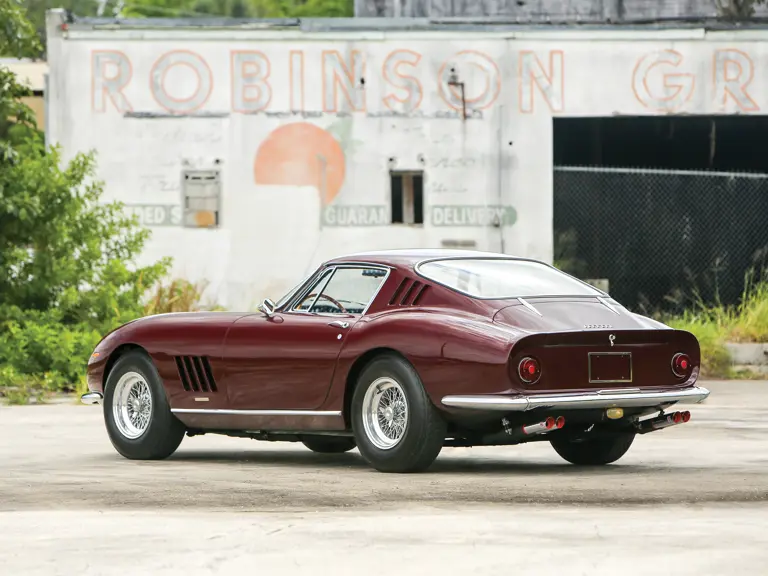
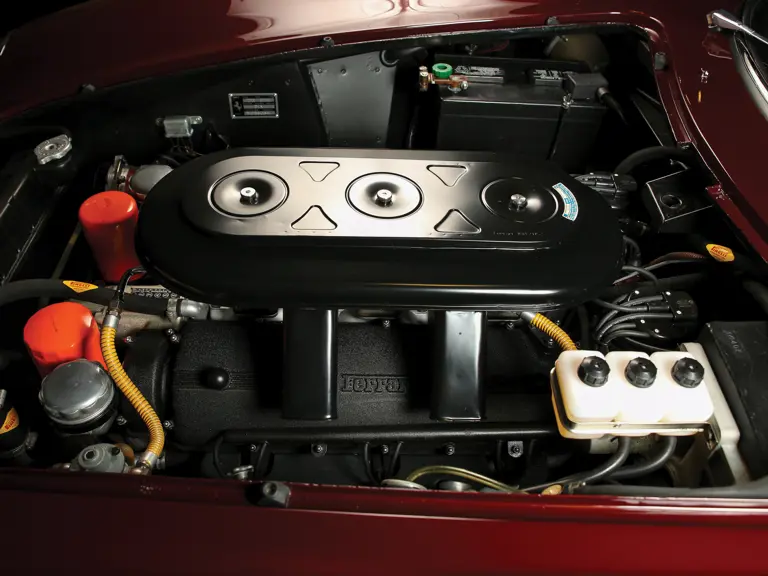

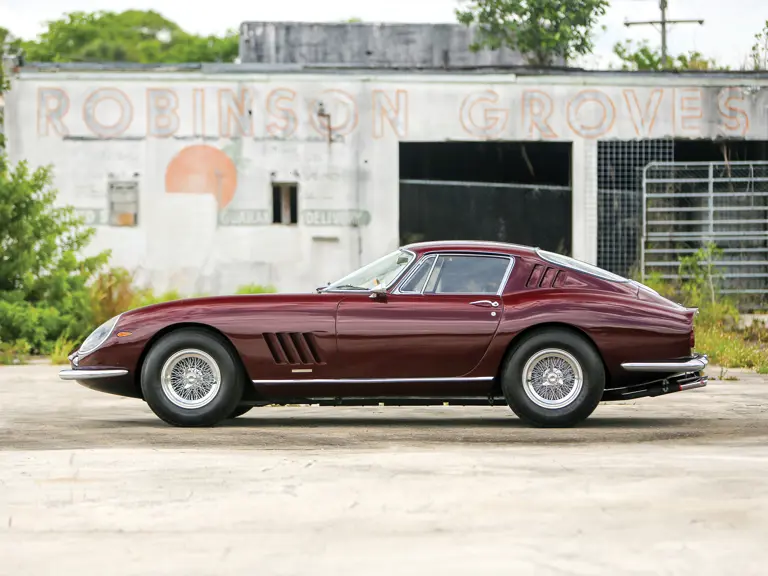

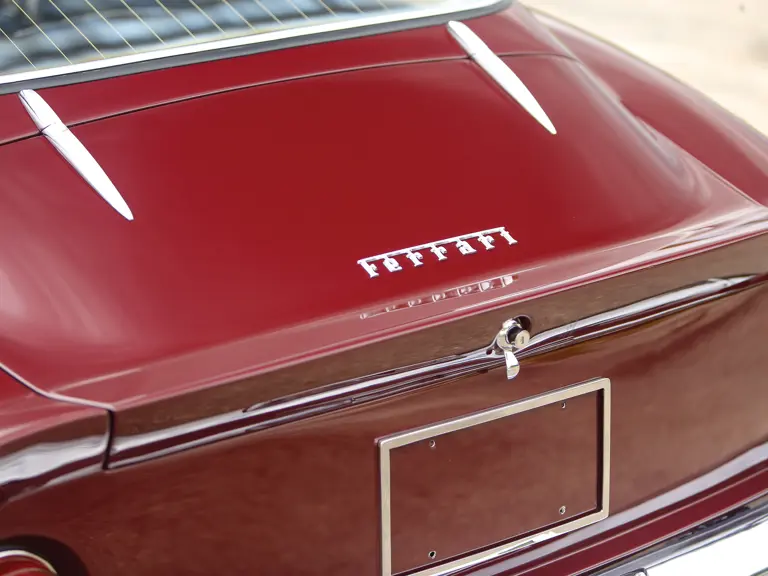

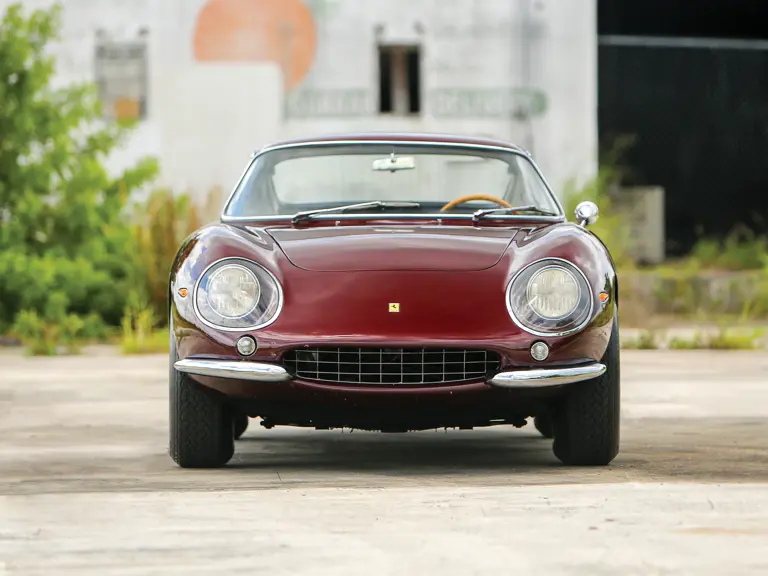
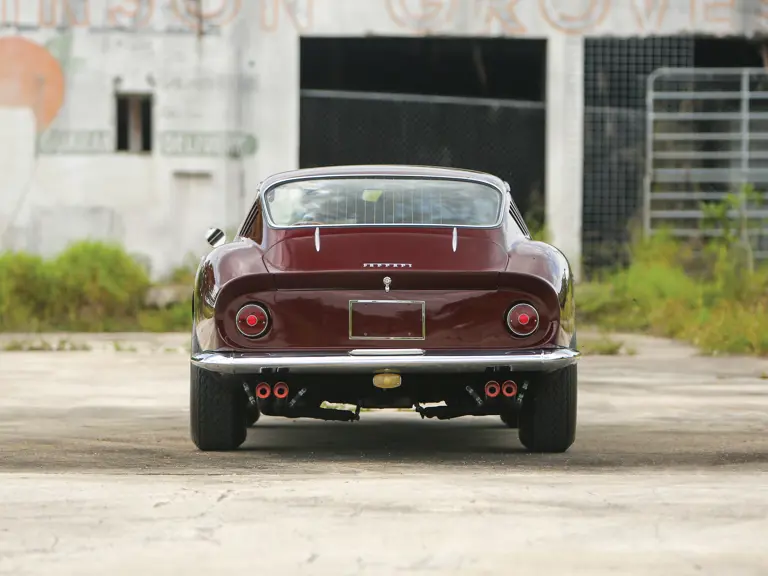
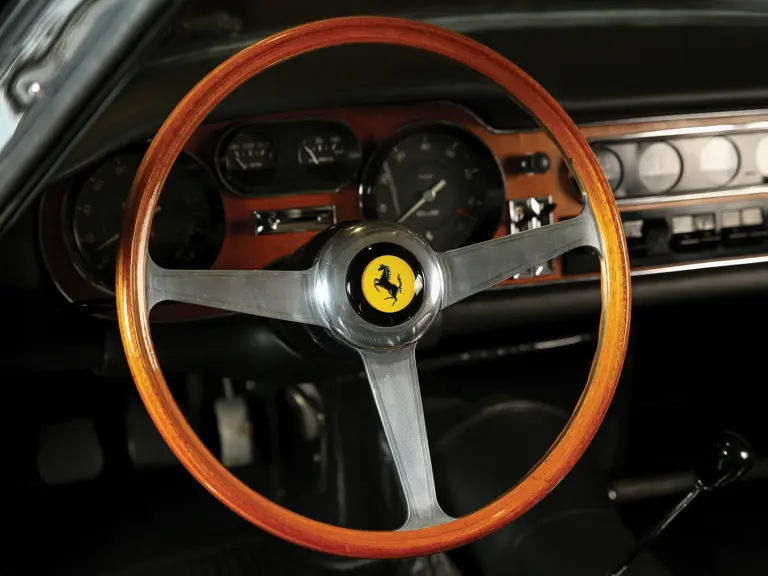
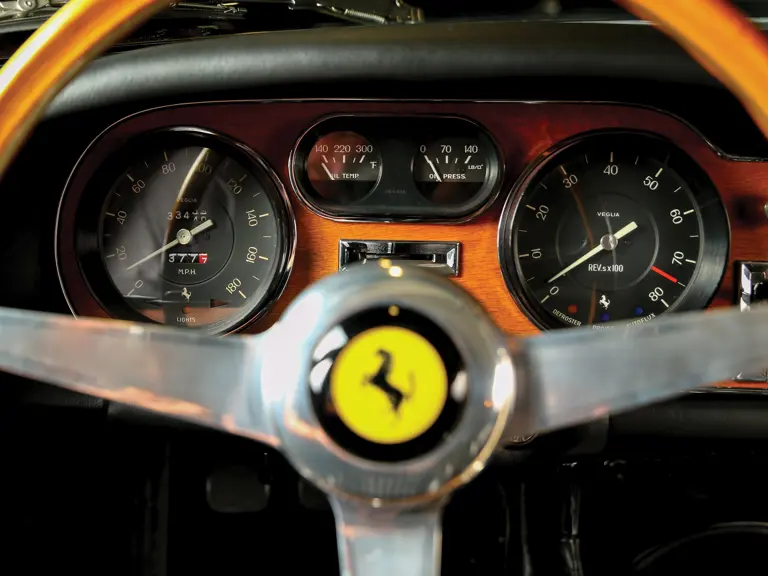
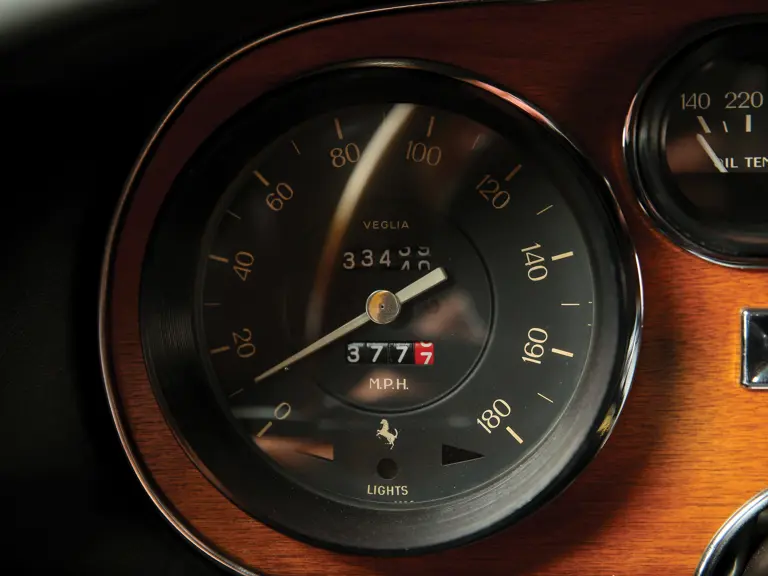
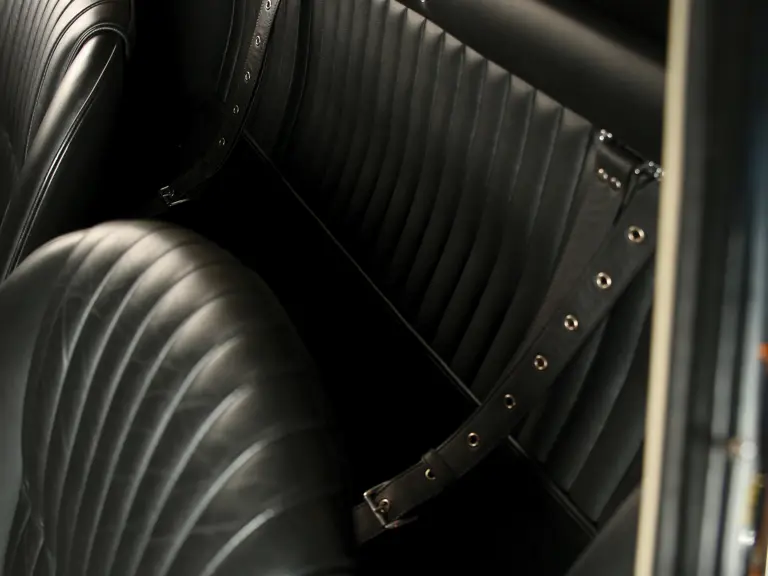
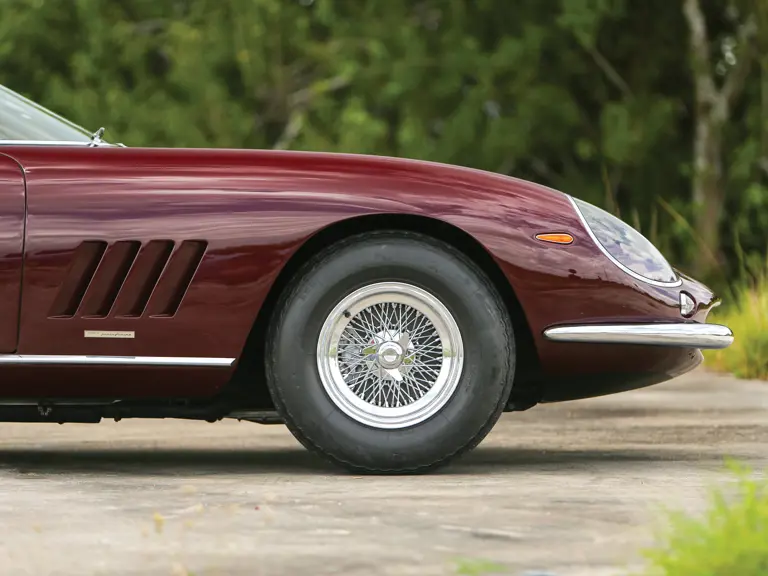
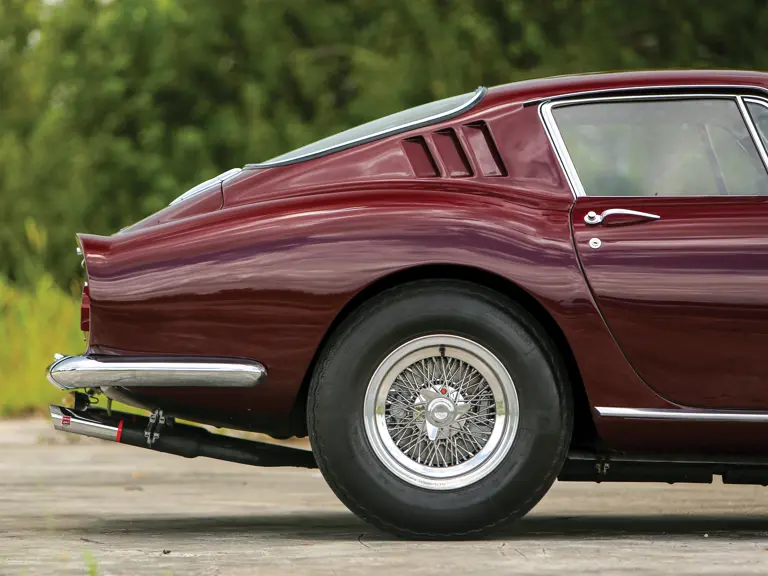

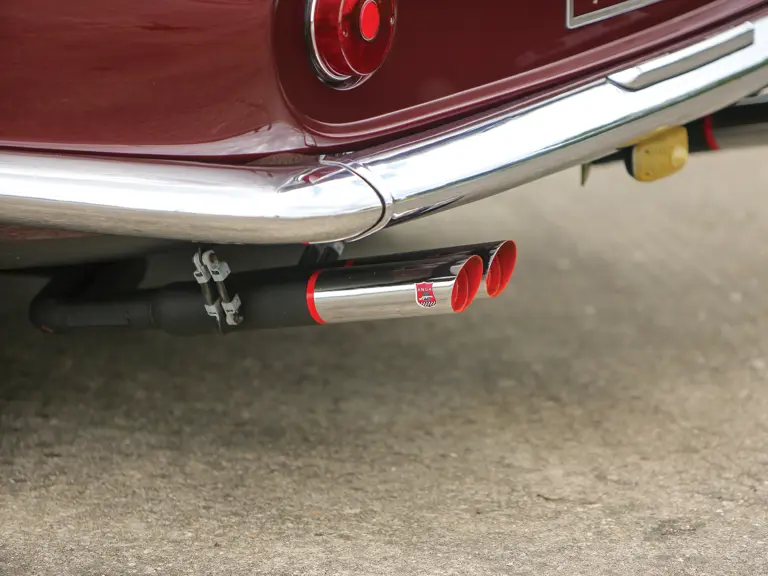

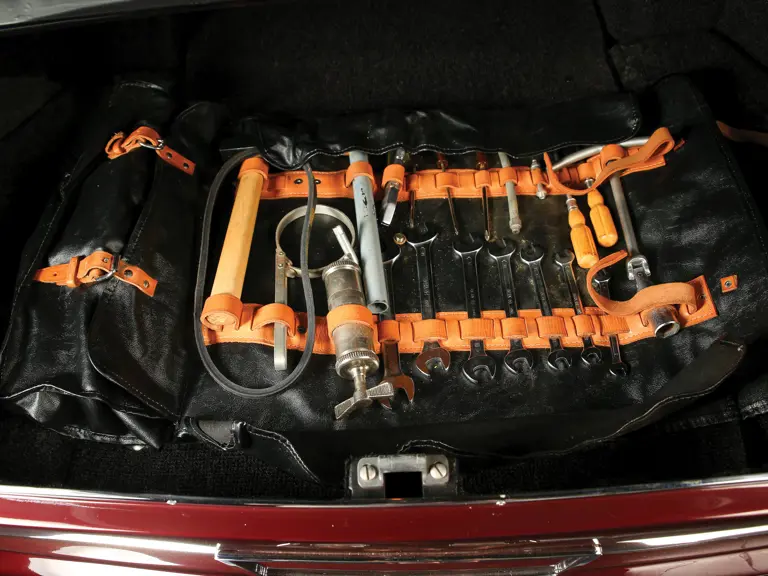

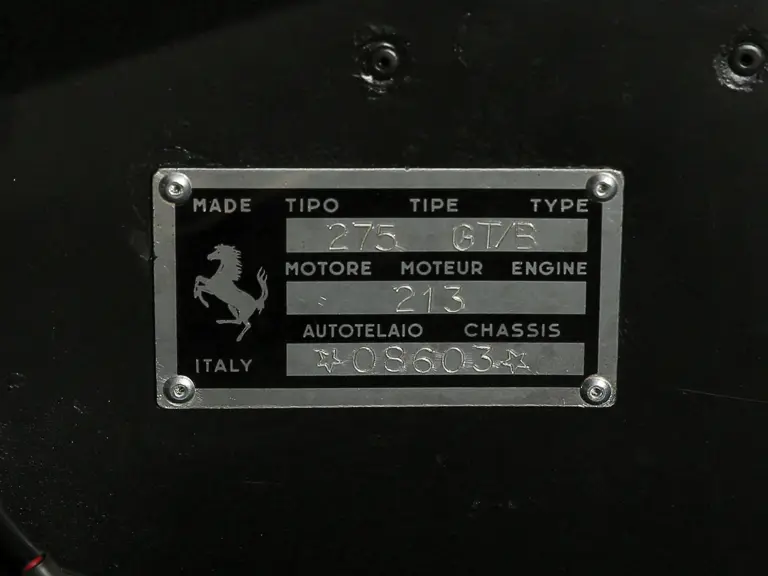
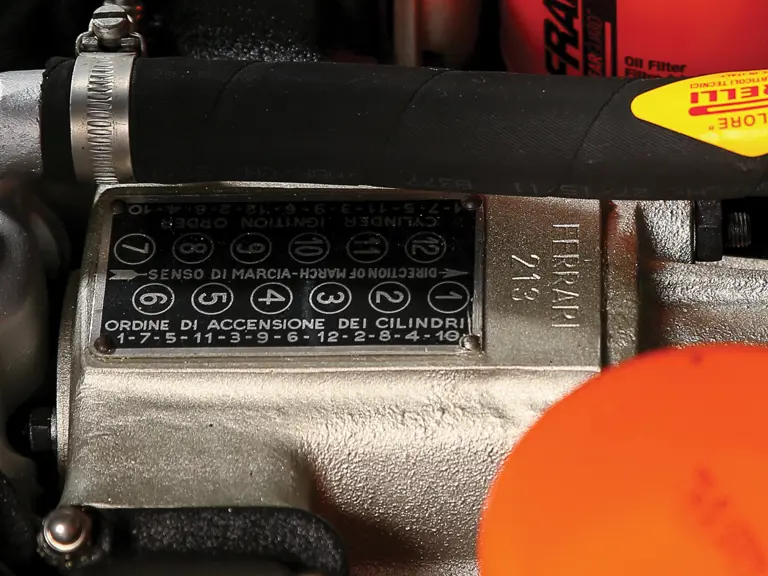

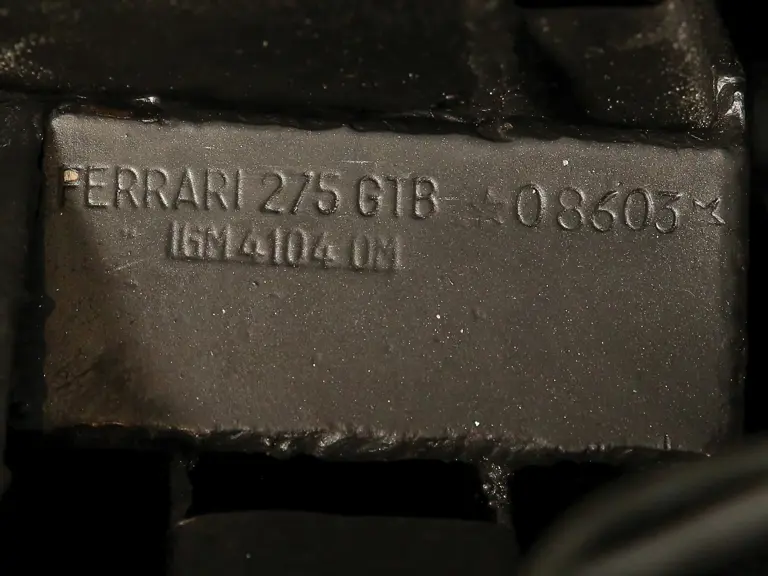
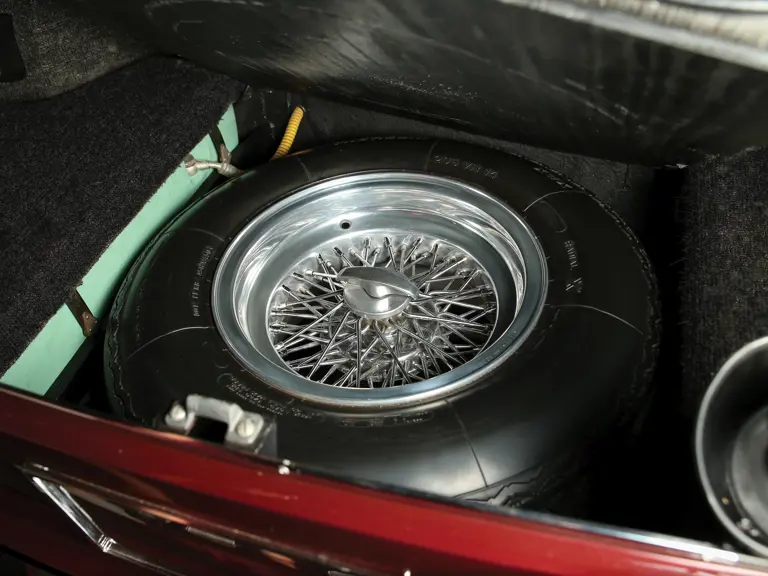

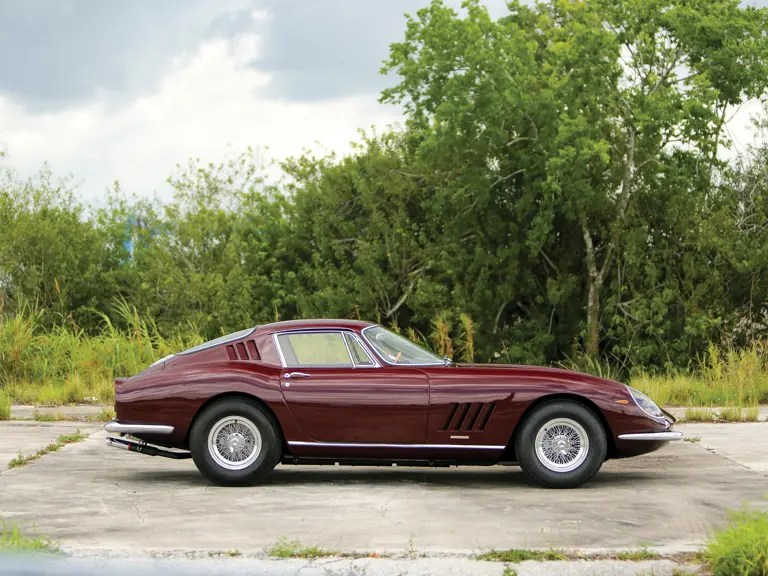
 | Monterey, California
| Monterey, California
